Cabernet Sauvignon is arguably the world’s most important red wine grape. Of course it grows all over the world. But for August 30, International Cabernet Sauvignon Day 2014, I am asking everyone to please drink Napa and show your support for the wine region which was struck by a devastating earthquake just a few days ago.
August 24, at 3:20 am, the bucolic community of Napa Valley was rocked to its core by a 6.0 magnitude earthquake. Early damage assessments pegged the potential loss at more than $100 Million dollars. Subsequent reports now have a range of $500 Million Dollars to as much as $1 Billion Dollars! The full extent of the tragic losses are not yet known. Fortunately, the quake slammed the region in the middle of the night. Had it struck just a few hours earlier, when people were in the downtown Napa area, the potential for severe injuries cannot be understated.
For the last few days, residents of Napa Valley have been digging themselves out of the destruction. With smashed bottles of valuable wine turning into rivers and barrels strewn all over the place like children’s toys left behind, it will take days to get a true assessment on the loss. Building after building and buckled, broken or breaking. That is why drinking Napa is so important for International Cabernet Sauvignon Day this year.
Plus, Cabernet Sauvignon based wines from the Napa Valley great! If you want to read about Napa Valley Cabernet Sauvignon we’ve tasted recently, please see our Wine Tasting Notes. If you’re reading this article with a glass of Napa wine for in your hand for International Cabernet Sauvignon Day 2014, that’s even better!
Jean Charles Cazes from Chateau Lynch Bages in Pauillac knows quite a bit about Cabernet Sauvignon. He’s also a big fan of Cabernet Sauvignon. Cazes explains what he looks for a Cabernet Sauvignon based wine.
Jean Charles Cazes – Lynch Bages “The greatest Cabernet Sauvignon wines are characterized by their capacity to age, combining a powerful structure with elegance and finesse. The Cabernet Sauvignon grown on our terroir at Lynch Bages often in their youth express black currants fruit, flowery violet aromas and a hint of minerality, for example graphite and shaved lead pencil. It tends to develop with a few years a more complex bouquet of spicy notes, or even cigar box aromas. The finish has to be smooth, polished and very long!”
Philippe Melka who owns his own, eponymous winery, and is an equally well-known as a consultant working with numerous estates in the Napa Valley is a fan of Napa Valley Cabernet Sauvignon and the Cabernet Sauvignon dominated wines from the Left Bank of Bordeaux, especially on the most famous First Growth wines.
Philippe Melka – Melka Wines “Chateau Lafite Rothschild is the benchmark for Cabernet Sauvignon. There is a sense of seriousness, coupled with the grace and sophistication in the wine.”
It’s important to drink Napa and support the northern California wine making community this year for International Cabernet Sauvignon Day 2014. One look at the historic Trefethen Family Vineyards tasting room, which is potentially lost forever helps explain why.
In California, many wineries produce wine from 100% Cabernet Sauvignon, although blends are common as well. Cabernet Sauvignon based wines are the most expensive wines produced in California, with prices for Screaming Eagle hitting well over $1,000 per bottle! Harlan Estate is not far from that price point either.
Aaron Pott, the owner of Pott Wine, located in the Napa Valley on Mt. Veeder is equally well-known for the wines he makes, the wineries he consults, for example Seven Stones, Blackbird, Fisher Vineyards and Quixote along with his extensive experience at tasting a wide range of wines. Especially older vintages of Bordeaux and California wine.
What are some of the best Cabernet Sauvignon based wines Aaron Potts recalls tasting?
Aaron Pott “Cabernet Sauvignon has few peers in its age-ability. Some of the great Cabernet Sauvignon wines I have tasted over the year range from older vintages of Chateau Latour like 1947, 1949 and 1961 to older Mayacamas made in 1970 and 1974. Also from California the 1969 Chapellet and more recently, 1991 Ridge Monte Bello.”
The thick skins on the Cabernet Sauvignon grape are one of the grapes key attributes, according to Didier Cuvelier, the owner of Chateau Leoville Poyferre in St. Julien.
Didier Cuvelier – Leoville Poyferre “When we are harvesting, we are searching for phenolic maturity. Since the skin of Cabernet Sauvignon is very rich in tannins, perfect phenolic maturity is essential to reach the high concentrated and smooth tannins we are looking for at Leoville Poyferre.”
The actual discovery of the true origin of Cabernet Sauvignon is moderately recent. In 1996, a team of scientists led by Carole Meredith, the owner of Lagier Meredith, (a Rhone varietal producer who suffered intense damage from recent earthquake) used plant DNA material to determine the fruits origin. It is thought that the variety was created by an accidental crossing that took place sometime in the 17th century between Cabernet Franc and Sauvignon Blanc.
Cabernet Sauvignon grows in a myriad of different soils and terroir, it thrives in the poor, deep gravel soils and warm, sunny, dry temperatures. Cabernet Sauvignon requires more time on the vine than Merlot. Cabernet Sauvignon is not just famous for its success in Bordeaux, today, it is the dominant grape in the Napa Valley. But that is actually quite a recent phenomena that is barely 40 years old. Prior to the massive Cabernet Sauvignon plantings that began to take place in Napa and in other northern California areas, much of the vineyards were focused on Zinfandel, Italian varietals and field blends. Cabernet Sauvignon is always blended with other grapes in Bordeaux, but that is not the case in California. In fact, today there are countless wineries making 100% Cabernet Sauvignon in the Golden State.
Dominus, one of the quintessential wineries in the Napa Valley produces wines with a blend similar to what you might find in the Left Bank of Bordeaux. Aside from the fact that it works, it’s also understandable due to the fact that Dominus is owned by Christian Moueix, whose family owns chateaux like Trotanoy and of course Petrus. As Dominus is getting ready to begin picking their 2013 Cabernet Sauvignon the first week of September. Tod Mostero, the wine maker for Dominus explains what they look for at Dominus with their Cabernet Sauvignon in the vineyard.
“Tod Mostero – Dominus “We seek harmony, tantamount to the freshness of a rosebud as it opens. If you pick before or after, you have lost it. Cabernet Sauvignon, at its pinnacle, expresses purity, balance and complexity transcending its varietal character.”
Dominus, due to its unique, supple, balanced style is not only popular with American’s, it’s enjoyed by many people in Bordeaux as well. Jean Charles Cazes of Lynch Bages recalls tasting an older vintage of Dominus.
Jean Charles Cazes – Lynch Bages “I can remember a great bottle of Dominus stolen from the cellar of my father, Jean Michel Cazes. I think it was a 1994 Dominus. I served it blind to some friends and it was very misleading! Many thought it was Bordeaux. I was very impressed by the finesse and drinkability.”
It is not all doom and gloom in Napa Valley, even in the aftermath of the earthquake. Everyone in the valley is helping everyone else in the valley clean up and come together. But it’s going to take sometime to dig out of all the rubble and clean up the tens of thousands of broken wine bottles. As you can see from the picture, that’s just part of the reason you should drink Napa for International Cabernet Sauvignon Day 2014.
As we mentioned previously, in Bordeaux, Cabernet Sauvignon is always used as part of the blend. It can be over 90% of the blend in some vintages at select estates in the Left Bank. At other properties, it might be as low as 50%, or even a little less. At Chateau Palmer in Margaux, they use one of the higher percentages of Merlot in their blend in the Medoc. Yet, without the addition of Cabernet Sauvignon according to Thomas Duroux, the director of Chateau Palmer, the wine would not have the same finesse.
Thomas Duroux – Chateau Palmer “Here at Chateau Palmer, the Cabernet Sauvignon grape is the main element we use to build the finesse in our wines. That why it is so important to get it right. In a vintage like 2012, the Cabernet Sauvignon grape is also needed to bring to bring freshness to the final blend.”
At Chateau Pichon Baron in Pauillac, the director Jean Rene Matignon explains what he looks for in Cabernet Sauvignon.
Jean Rene Matignon – Pichon Baron “We are seeking a good balance between tannins and acidity. In Bordeaux. there is no over ripeness problems with Cabernet Sauvignon. The challenge is to wait until as long as possible for the good tannins so we can preserve the tonicity and minerality in the wines character. The trick is to avoid flatness and dilution.”
With all this talk about Cabernet Sauvignon, what are you opening when you drink Napa to celebrate International Cabernet Sauvignon Day 2014?

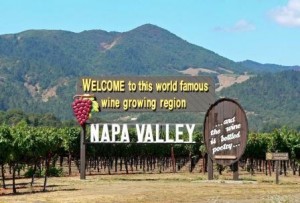
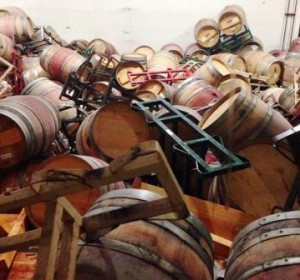
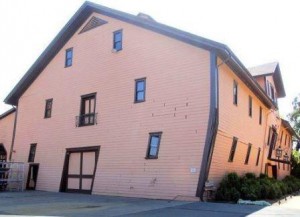
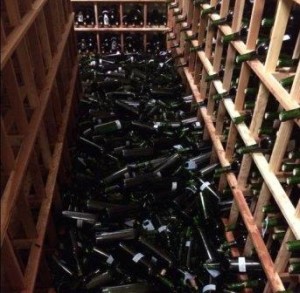
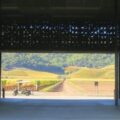
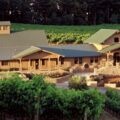
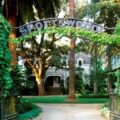

13 Comments
RT @JeffLeve: #drinknapa for International Cabernet Day http://t.co/hoMeZ3oJGo in support of the #napaquake victims. http://t.co/PkhvH03ucZ
Drink Napa Wine for a good cause and tocelebrate International Cabernet Sauvignon Day http://t.co/uw19DGXlK8
RT @WineChetah: RT@NCwinegifts #CabernetDay Drink Napa Wine for International Cabernet Sauvignon Day Aug 30 http://t.co/jQnLbee6Yi We agree…
RT @JeffLeve: #drinknapa for International Cabernet Day http://t.co/hoMeZ3oJGo in support of the #napaquake victims. http://t.co/PkhvH03ucZ
RT @JeffLeve: #drinknapa for International Cabernet Day http://t.co/hoMeZ3oJGo in support of the #napaquake victims. http://t.co/PkhvH03ucZ
RT @JeffLeve: #drinknapa in support of Napa after the #napaquake for International Cabernet Sauvignon Day http://t.co/hoMeZ3oJGo .. http://…
RT @TopWineNews: #WineTalk: Drink Napa Wine for International Cabernet Sauvignon Day 2014 http://t.co/pMBQyarLT9
RT @TopWineNews: #WineTalk: Drink Napa Wine for International Cabernet Sauvignon Day 2014 http://t.co/pMBQyarLT9
RT @TopWineNews: #WineTalk: Drink Napa Wine for International Cabernet Sauvignon Day 2014 http://t.co/pMBQyarLT9
#drinknapa in support of Napa after the #napaquake for International Cabernet Sauvignon Day http://t.co/hoMeZ3oJGo .. http://t.co/qEbk5nXOms
#drinknapa for #Internationalcabernetsauvignonday http://t.co/hoMeZ3oJGo International Cabernet Sauvignon Day 2014. http://t.co/DyKhXdf1yG
RT @JeffLeve: Drink Napa Wine for International Cabernet Sauvignon Day 2014 http://t.co/DsIgdH0lnz